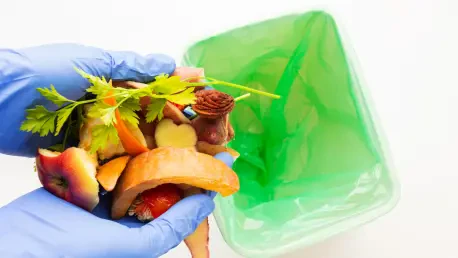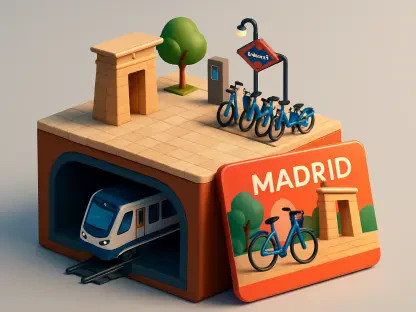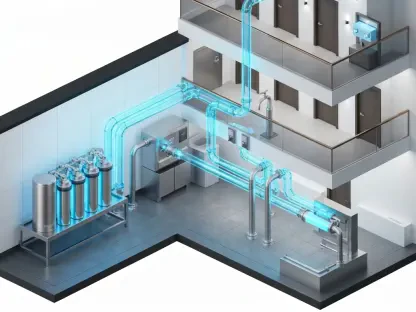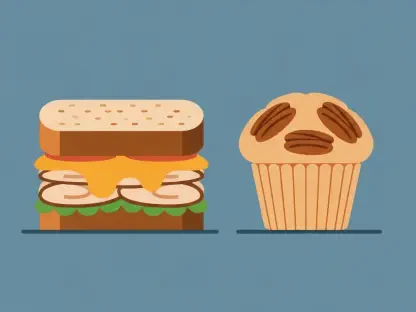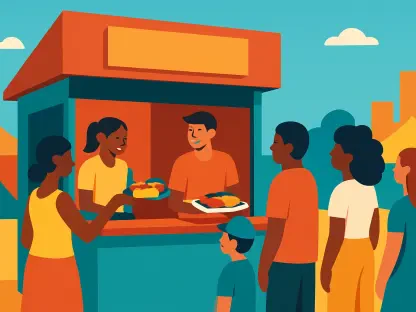Setting the Stage for a Sustainable Revolution
Imagine a region where every scrap of discarded food transforms into energy, compost, or innovative bio-products, slashing greenhouse gas emissions and fueling a circular economy. This is the ambitious vision driving the European Union’s food waste management market, a sector poised for transformative growth over the next decade. With the market currently valued at USD 30.7 million, projections indicate a surge to USD 54.5 million by 2035, reflecting a robust compound annual growth rate (CAGR) of 5.9%. This analysis delves into the forces propelling this expansion, from stringent regulations to cutting-edge technologies, and examines the implications for stakeholders across the food supply chain. The urgency to address food waste—responsible for significant methane emissions when landfilled—has never been clearer, making this market a critical battleground for sustainability and economic opportunity.
Market Trends and In-Depth Analysis
Regulatory Frameworks: The Engine of Market Expansion
The EU’s regulatory landscape stands as a cornerstone of the food waste management market’s growth. Directives like the Waste Framework Directive mandate waste reduction targets and organic waste separation, pushing businesses in food manufacturing, retail, and hospitality to adopt professional waste management services. Penalties for non-compliance further incentivize partnerships with certified providers, especially in countries undergoing regulatory modernization such as Spain and Italy, where CAGRs are projected at 7.0% and 6.5%, respectively. Despite these drivers, challenges persist, including inconsistent enforcement across member states and the financial burden of compliance for smaller enterprises. Nonetheless, these policies are shaping a market increasingly aligned with the EU’s sustainability objectives, fostering accountability and driving demand for innovative solutions.
Environmental Urgency Fueling Valorization Demand
Environmental concerns are a powerful catalyst for the market, as food waste decomposition in landfills generates methane, a potent greenhouse gas. This has spurred demand for valorization processes—such as composting and anaerobic digestion—that convert waste into valuable outputs like biogas and bio-fertilizers. Currently holding a 35% market share, the valorization segment is expected to grow to 40% by 2035, reflecting both ecological benefits and economic potential through revenue generation. However, barriers such as inconsistent waste quality and high setup costs for processing facilities can impede progress. Despite these hurdles, valorization remains a pivotal strategy, offering the dual advantage of reducing carbon footprints while creating marketable products, thus anchoring the EU’s climate mitigation efforts.
Technological Innovations Reshaping Operations
Technology is revolutionizing the food waste management landscape, enhancing efficiency and transparency across the value chain. Digital tools like IoT sensors and blockchain platforms are optimizing waste tracking and collection logistics, particularly for multi-site businesses in mature markets like Germany, which holds a 24% market share with a steady 4.5% CAGR. Emerging valorization techniques, such as insect farming for protein feed, are also gaining traction, diversifying recovery options. Yet, the high cost of adopting these technologies poses a challenge, especially for smaller providers, and there’s a risk of over-reliance on tech without addressing upstream waste prevention. Balancing innovation with practical implementation remains essential to fully harness these advancements across diverse EU regions.
Regional Variations Highlighting Growth Disparities
The EU market exhibits stark regional disparities, reflecting varying levels of infrastructure and policy maturity. Germany and the Netherlands, with established systems, show stable growth at 4.5% and 6.0% CAGRs, respectively, driven by robust composting and digestion facilities. In contrast, emerging markets like Spain and Italy are experiencing rapid expansion at 7.0% and 6.5% CAGRs, fueled by infrastructure investments and regulatory updates from a lower starting point. These differences underscore the need for tailored strategies to address local challenges, such as limited processing capacity in less developed regions. As investments flow into emerging markets, the overall market dynamics point toward a more balanced growth trajectory by 2035, bridging gaps between leading and lagging areas.
Corporate Sustainability as a Demand Driver
Corporate commitments to sustainability are significantly boosting demand for waste management services within the EU. Food manufacturers, holding a 30% share of end-use demand, alongside retailers and hospitality operators, are integrating waste reduction into their environmental, social, and governance (ESG) strategies to meet investor and consumer expectations. Zero-waste-to-landfill targets are becoming standard among major players, driving partnerships with providers offering comprehensive diversion and valorization solutions. This trend not only supports regulatory compliance but also enhances brand reputation, creating a steady demand stream. However, smaller firms often struggle with the resources needed to adopt such practices, highlighting a need for scalable, cost-effective solutions to broaden market participation.
Emerging Trends Pointing to a Circular Future
Looking ahead, several trends are set to redefine the market landscape over the next decade. A pronounced shift toward circular economy models is evident, with food waste increasingly viewed as a resource for high-value products like bio-based chemicals and animal feed. Digital tracking platforms are expected to further streamline operations, while advanced valorization methods promise greater efficiency in resource recovery. Tighter regulations may emerge, emphasizing waste prevention at the source, alongside economic challenges tied to fluctuating commodity prices for recovered goods. Strategic partnerships between providers, manufacturers, and municipalities are anticipated to play a crucial role in scaling solutions, while market consolidation among giants like Veolia (18% share) and SUEZ (12%) suggests a competitive, innovation-focused future.
Strategic Reflections and Forward-Looking Insights
Reflecting on the analysis, it becomes clear that the EU food waste management market has embarked on a transformative journey, with a projected 77.5% growth by 2035 driven by regulatory mandates, environmental imperatives, and technological strides. The disparities across regions and the dominance of valorization services underscore the complexity and potential of this sector. Moving forward, stakeholders need to prioritize strategic alliances to leverage infrastructure and expertise, ensuring the scalability of solutions. Businesses are encouraged to invest in prevention programs and digital tools to cut costs and enhance compliance, while policymakers must focus on harmonizing regulations to support smaller players. As the market evolves, the challenge remains to turn every discarded fragment into a building block for a sustainable economy, setting a global benchmark for innovation and collaboration.
